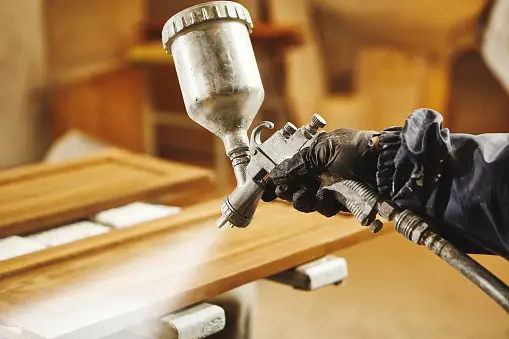Painting walls can be a daunting task, but with the right homeowner paint sprayer, you can achieve professional results with ease. Whether you’re refreshing a single room or tackling a larger project, a paint sprayer can save you time, effort, and give you a smooth, even finish. In this guide, we’ll explore the benefits of using a paint sprayer, different types available, and tips on selecting the best one for your needs.
Benefits of Using a Paint Sprayer
Speed and Efficiency
One of the biggest advantages of using a paint sprayer is the speed at which you can cover large areas. Unlike traditional brushes and rollers, sprayers can apply paint quickly and evenly, reducing the time it takes to complete your project. This is especially beneficial for larger rooms or exterior walls.
Smooth, Even Finish
Paint sprayers provide a smooth, even coat of paint, which can be difficult to achieve with brushes or rollers. This is particularly important for surfaces with intricate details or textures, where a brush might leave visible strokes or miss spots. A sprayer ensures a consistent finish, making your walls look professionally painted.
Versatility
Paint sprayers are versatile tools that can be used for a variety of projects. From walls and ceilings to furniture and outdoor surfaces, a good sprayer can handle different types of paint and finishes. This makes them a valuable addition to any homeowner’s toolkit.
Types of Paint Sprayers
Airless Paint Sprayers
Airless paint sprayers use high pressure to force paint through a tiny nozzle, creating a fine spray. These sprayers are ideal for large projects and can handle thick paints, such as latex. They are fast and efficient but can be more challenging to control, making them better suited for experienced users.
HVLP (High Volume Low Pressure) Sprayers
HVLP sprayers use a high volume of air at low pressure to atomize the paint. This results in less overspray and a finer finish, making them perfect for detailed work and smaller projects. They are easier to control than airless sprayers, but they may not be as effective for thick paints or large surfaces.
Compressed Air Sprayers
Compressed air sprayers use an air compressor to atomize the paint. They are versatile and provide a smooth finish but can produce a lot of overspray. These sprayers are suitable for a variety of projects, but they require an air compressor, which can be an additional expense.
Choosing the Right Paint Sprayer
Consider Your Project Size
The size of your project will play a significant role in determining the type of sprayer you need. For large projects, such as exterior walls or entire rooms, an airless sprayer may be the best choice due to its speed and efficiency. For smaller projects or detailed work, an HVLP sprayer might be more appropriate.
Evaluate the Type of Paint
Different sprayers work better with different types of paint. If you’re using thick latex paint, an airless sprayer is ideal. For thinner paints or stains, an HVLP sprayer will provide a finer finish. Make sure the sprayer you choose is compatible with the type of paint you’ll be using.
Assess Your Skill Level
Your experience with paint sprayers should also influence your decision. Airless sprayers are powerful and fast but can be challenging to control, making them better suited for experienced users. HVLP sprayers are easier to handle and provide more control, making them a great choice for beginners.
Budget Considerations
Paint sprayers come in a range of prices, from budget-friendly options to high-end models. While it’s important to stay within your budget, investing in a quality sprayer can save you time and effort in the long run. Consider the features and capabilities of each model to find the best value for your money.
Maintenance and Cleaning
Proper maintenance and cleaning are essential for the longevity and performance of your paint sprayer. Some models are easier to clean than others, so consider how much time and effort you’re willing to invest in maintaining your sprayer. Look for models with easy-to-remove parts and straightforward cleaning instructions.
Tips for Using a Paint Sprayer
Prepare Your Workspace
Before you start spraying, make sure to prepare your workspace. Cover floors, furniture, and any areas you don’t want to be painted with drop cloths or plastic sheeting. Use painter’s tape to protect trim and edges.
Practice Your Technique
If you’re new to using a paint sprayer, practice on a piece of cardboard or scrap wood before starting your project. This will help you get a feel for the sprayer and adjust your technique for an even application.
Maintain a Consistent Distance
Hold the sprayer at a consistent distance from the surface you’re painting, usually about 10-12 inches. Moving the sprayer too close or too far can result in uneven coverage and drips.
Use Smooth, Even Strokes
Move the sprayer in smooth, even strokes, overlapping each pass slightly to ensure even coverage. Avoid stopping and starting in the middle of a stroke, as this can create visible lines and uneven areas.
Clean Your Sprayer Thoroughly
After completing your project, clean your sprayer thoroughly according to the manufacturer’s instructions. Proper cleaning and maintenance will ensure your sprayer remains in good working condition for future use.
Conclusion
Choosing the right graco homeowner sprayer parts can make a significant difference in the quality and efficiency of your painting projects. By considering factors such as project size, paint type, skill level, and budget, you can find the perfect sprayer for your needs. With the right tools and techniques, you can achieve professional results and transform your home with ease.




